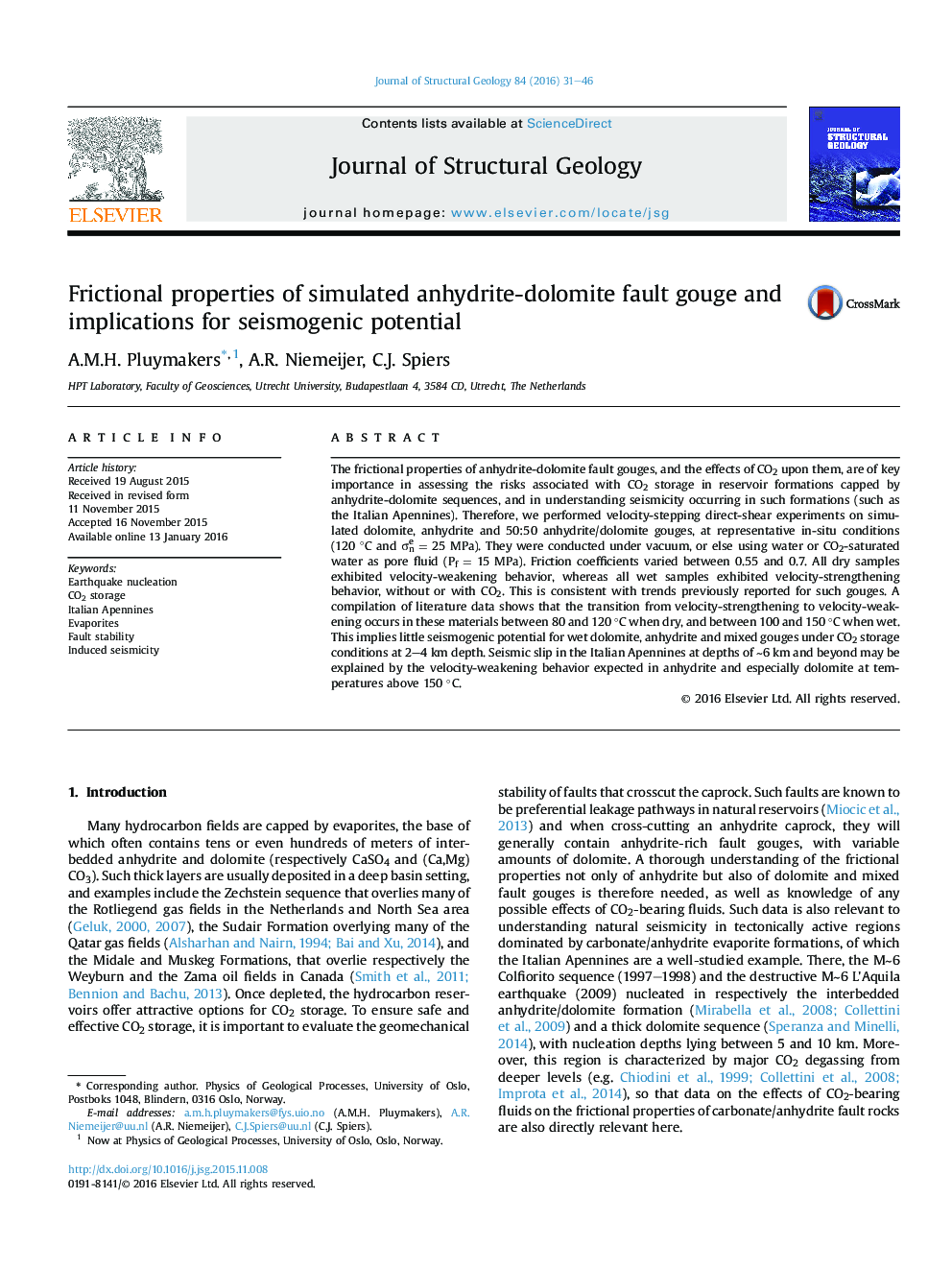| Article ID | Journal | Published Year | Pages | File Type |
|---|---|---|---|---|
| 4732930 | Journal of Structural Geology | 2016 | 16 Pages |
•Direct shear tests on anhydrite, dolomite and a 50:50 mixture at 120 °C, 25 MPa.•Friction coefficient is 0.6–0.7. Dry samples are strongest, wet + CO2 samples weakest.•For dry samples (a-b)<0, for wet and wet + CO2 samples (a-b)>0.•50:50 mixtures show lower absolute (a-b) than end-member equivalents, but same sign.•No evidence for velocity-weakening hence seismogenesis at CO2 storage conditions.
The frictional properties of anhydrite-dolomite fault gouges, and the effects of CO2 upon them, are of key importance in assessing the risks associated with CO2 storage in reservoir formations capped by anhydrite-dolomite sequences, and in understanding seismicity occurring in such formations (such as the Italian Apennines). Therefore, we performed velocity-stepping direct-shear experiments on simulated dolomite, anhydrite and 50:50 anhydrite/dolomite gouges, at representative in-situ conditions (120 °C and σne = 25 MPa). They were conducted under vacuum, or else using water or CO2-saturated water as pore fluid (Pf = 15 MPa). Friction coefficients varied between 0.55 and 0.7. All dry samples exhibited velocity-weakening behavior, whereas all wet samples exhibited velocity-strengthening behavior, without or with CO2. This is consistent with trends previously reported for such gouges. A compilation of literature data shows that the transition from velocity-strengthening to velocity-weakening occurs in these materials between 80 and 120 °C when dry, and between 100 and 150 °C when wet. This implies little seismogenic potential for wet dolomite, anhydrite and mixed gouges under CO2 storage conditions at 2–4 km depth. Seismic slip in the Italian Apennines at depths of ∼6 km and beyond may be explained by the velocity-weakening behavior expected in anhydrite and especially dolomite at temperatures above 150 °C.
